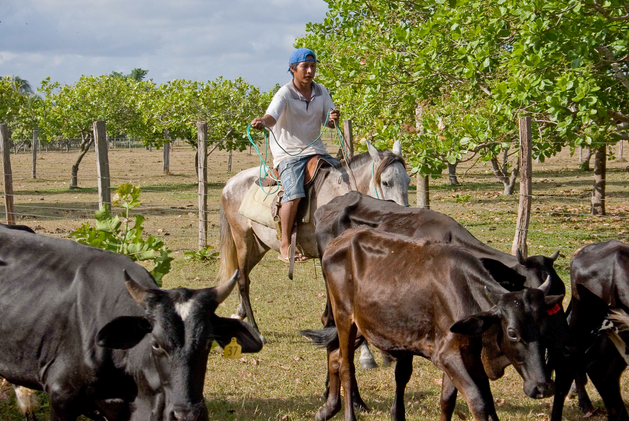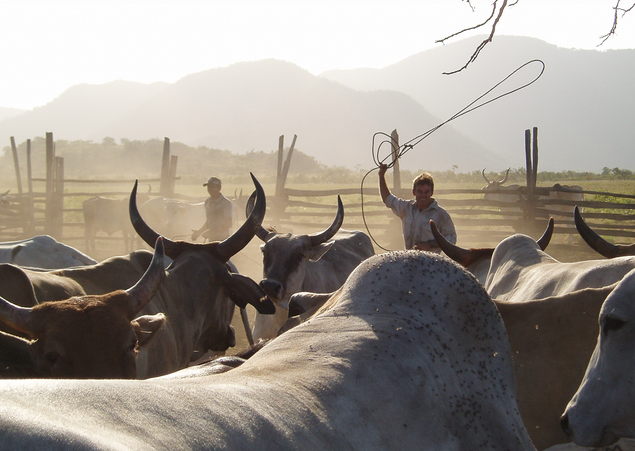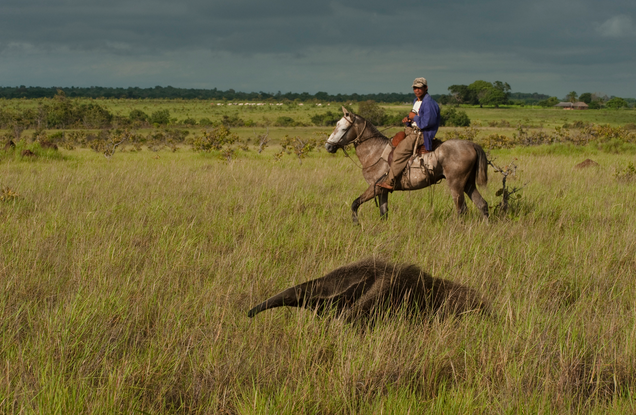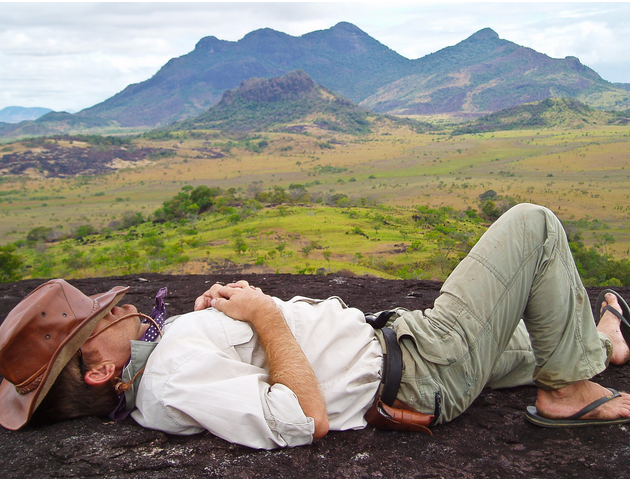Living the Ranch Life
September 3, 2019 - 6 minutes read South Rupununi, in the lower part of Guyana, is starkly different from the dense green rainforests of the north of the country. This is a land rich in traditions and where the wild ways from the turn of the 20th century endure. No matter which way you look, you see an endless golden-brown savannah and low blue hills circling them at the horizon. The sky hangs spectacularly low, making sunrises and sunsets stuff that photography fantasies are made of. It is a place that is sure to get under your skin and remain etched in your memory!
South Rupununi, in the lower part of Guyana, is starkly different from the dense green rainforests of the north of the country. This is a land rich in traditions and where the wild ways from the turn of the 20th century endure. No matter which way you look, you see an endless golden-brown savannah and low blue hills circling them at the horizon. The sky hangs spectacularly low, making sunrises and sunsets stuff that photography fantasies are made of. It is a place that is sure to get under your skin and remain etched in your memory!
South Rupununi is the land where the rich ranching traditions of Guyana really began. It was at Dadanawa Ranch at the edge of the Rupununi River, that pioneered the vaquero lifestyle. Previously home to the Indigenous people of the region, the name Dadanawa is a distortion of local Wapishana Indigenous ‘Dadinauwau’, which translates as ‘macaw spirit creek hill’.
A trading post in the 1800s it was sold with 300 cattle heads to a man called H.P.C. Melville before the turn of the century. Today, the ranch has more than 5,000 heads of cattle that roam the 1,750 square miles of the area. Barefoot vaqueros still take care of the ranch in the traditional ways and are happy to show guests a slice of their life. There is plenty to do at a ranch for a visitor. From helping around in the main house, to planting peanuts or other crops, cleaning and feeding the cattle, pigs, poultry and the horses, or just relaxing under the milky sky at night.
Other ranches soon sprang up in the Rupununi, following Dadanawa’s example. Saddle Mountain, Karanambu, Manari, Waikin and many others are scattered around Lethem, the main town and air node to the South Rupununi. Each ranch has fascinating stories to recount and makes for a great stop during your visit to the region. Most visitors cover at least two ranches during a trip to the region for a truly immersive experience.
Running a ranch is hard work. Daily tasks of the vaquero ‘cowboys’ start in the early hours of the morning. Cleaning, feeding, giving medicines and taking the cattle out for feeding take up considerable time but it is also the perfect time to hone your riding skills. Trained riders love the terrain of the ranches, but the vaqueros are happy to help amateurs learn the basics. If you are really keen to experience the awesome riding skills of the local vaqueros, then plan a visit to the Rupununi for Sand Creek Rodeo and Rupununi Rodeo during Easter.
There are plenty of other attractions that you can explore while staying in one of the many experiential ranches of the Rupununi. Here are a few that you should not miss:
Birding and Wildlife
The vast stretch of savannah and the thickets of forests in between are excellent for bird watching. There are more than 400 species of birds that are found in the South Rupununi region, including the lesser-spotted endangered red siskin. Tiger herons, jacanas and even the elusive harpy eagle often make appearances. Jaguars, anteaters, labias, capybaras, anacondas and caimans are another draw for the nature and wildlife lover.
Fishing
Locals continue to hunt for their own food. Fishing is a big part of this. Spending the day with local indigenous people, cruising the rivers in a slim dugout canoe, fishing for giant catfish, peacock bass, and the occasional piranha is a thrilling experience. Thick primary forest and mangroves overhung with creepers, make the river settings really extraordinary. Knowing that the waters are filled with caimans and giant river otters, turns most fishing excursions into exciting wildlife spotting adventures.
Hiking
The hills in the Rupununi region are excellent for hikes. The Bone and Skulls Mountain off Shulainab, close to Saddle Mountain, is where one can see ancient indigenous burial sites. Thousand-year-old skulls and bones lie encased in small and large earthen pots to this day. The Moco Moco Mountain off Lethem is another great place for a day hike or the beginning of a multi-day trek. Regardless of your level of fitness, make an effort to reach the top of the mountain, as the views of the sprawling carpet of green, thick jungles below is absolutely stunning!
This remote part of the world, rich in its ancient ranching traditions is definitely one of the most memorable parts of visiting Guyana. So if your itching to wear that cowboy hat and boots, then we suggest go ahead and plan a visit to the ranches of the Rupununi.
Tags: Guyana traditions, Ranches in Guyana, South Rupununi, Traditional ranching



0 Comments